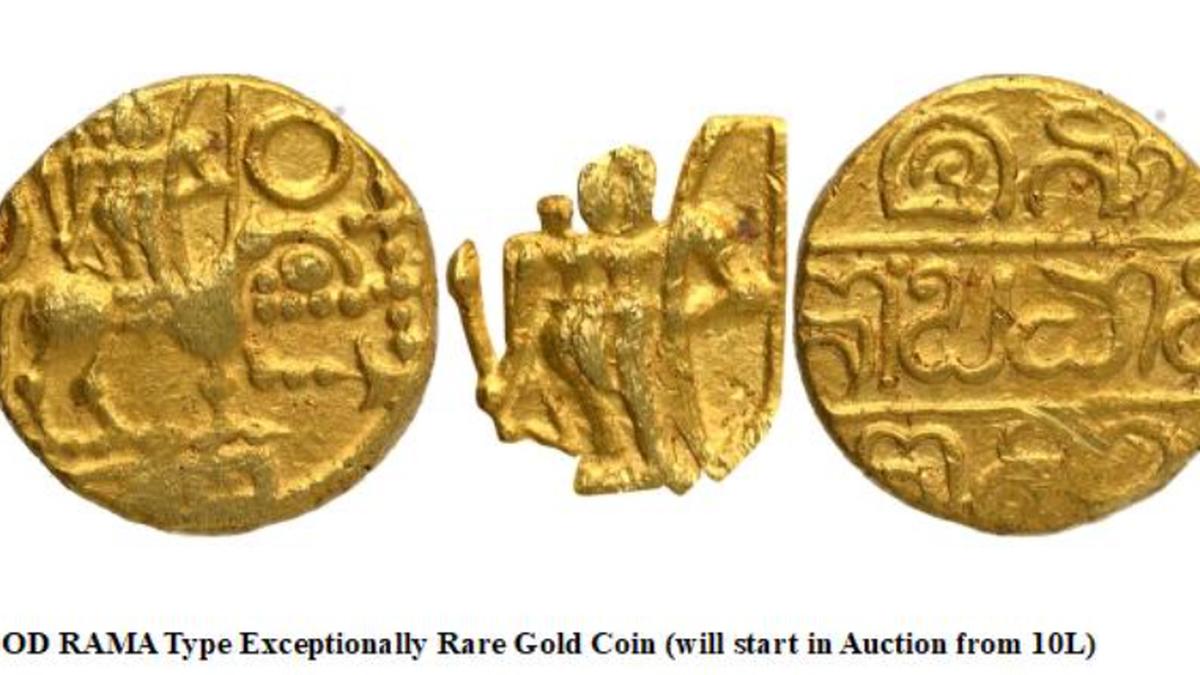
Rare coins of Hoysala, Chalukya, Chola and Mughal eras going under the hammer in Bengaluru
The Hindu
One of them is a Gold Kahavanu. According to the auction house, Gold Kahavanu were more than monetary instruments and were political statements, and also underscore the Cholas’ far-reaching trade networks, as their gold coinage was widely recognised and circulated across South and Southeast Asia, influencing local economies and cultures.
A Hoysala-era gold coin depicting Lord Rama, and said to be among the ‘highest rarities’ in the numismatic world with no known public records outside literary references so far, is among rare coins from the Hoysala, Western Chalukya, Chola and Mughal eras is going under the hammer in Bengaluru on January 6.
Among them is the 12th century ‘exceptionally rare’ gold coin weighing 4 gm, minted to celebrate Vishnuvardhana’s (Bittideva) conquest of Nolambavadi region (parts of Karnataka, Tamil Nadu and Andhra Pradesh). The coin has Kannada legend in three lines that states ‘Conqueror of Nolamba country’.
According to Mardudhar Arts, an ASI -licensed Bengaluru-based auction house, the coin celebrates the spiritual, cultural, and military legacy of one of south India’s greatest rulers.
Classified as ‘exceptionally rare’, a 10th century Gold Varaha coin with caparisoned boar, temple and Kannada legend was minted during the tenure of Jayasmiha II of Western Chalukyas of Kalyani. The coin depicts a four-petalled flower within a doorway that signifies prosperity while a Garuda figure above the temple may represent divine protection, according to the auction house. The Varaha, with its intricate design and impeccable condition, offers ‘insights into the political, cultural, and artistic landscape of the Deccan during the 10th AD’.
Another ‘exceedingly rare’ 4.32 gm gold Kahavanu coin (a medieval currency from Sri Lanka) of Rajendra Chola I of Chola Empire with Nagari legend ‘Sri Rajendra’ is part of the auction.
“The king’s standing and seated postures are rendered with exceptional clarity, capturing the regality and divine association of the Chola rulers. The use of Devanagari script highlights the cultural inclusivity of the Chola Empire, which extended its influence across linguistic and geographic boundaries,” auction house head Rajendra Maru said. The coin was likely issued to commemorate Rajendra’s military successes, or as a ceremonial piece. Fewer than five examples of this variant are known to exist. Its exceptional quality and high-relief strike place it among the finest specimens ever offered, he added.
According to the auction house, Gold Kahavanu were more than monetary instruments and were political statements, and also underscore the Cholas’ far-reaching trade networks, as their gold coinage was widely recognised and circulated across South and Southeast Asia, influencing local economies and cultures.

 Run 3 Space | Play Space Running Game
Run 3 Space | Play Space Running Game Traffic Jam 3D | Online Racing Game
Traffic Jam 3D | Online Racing Game Duck Hunt | Play Old Classic Game
Duck Hunt | Play Old Classic Game











